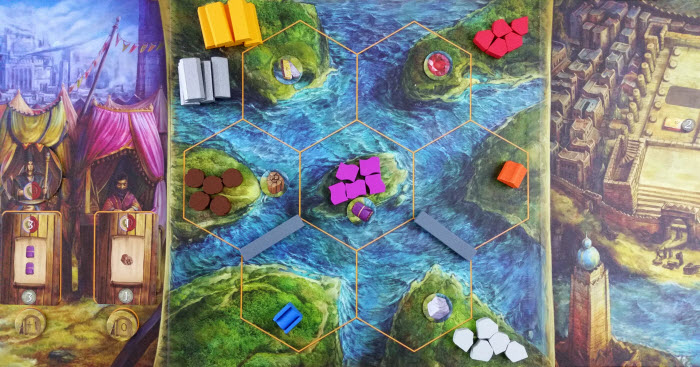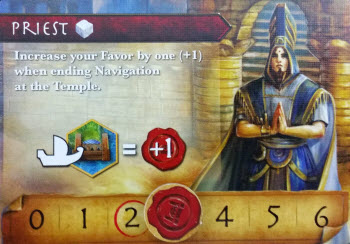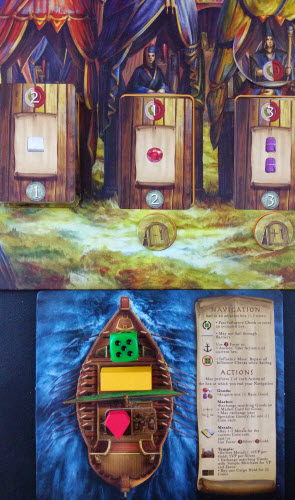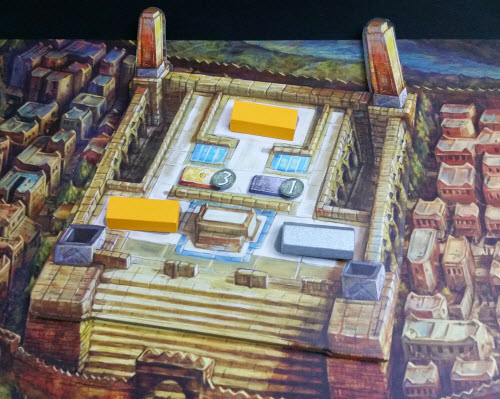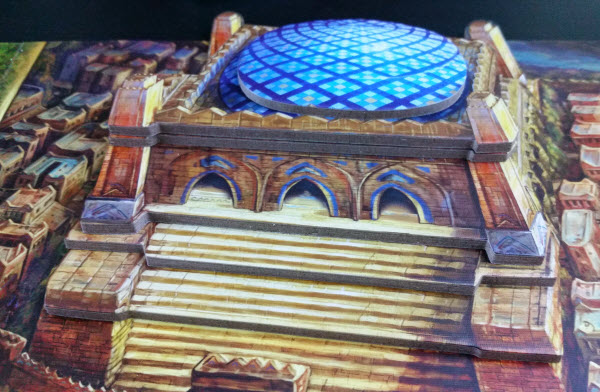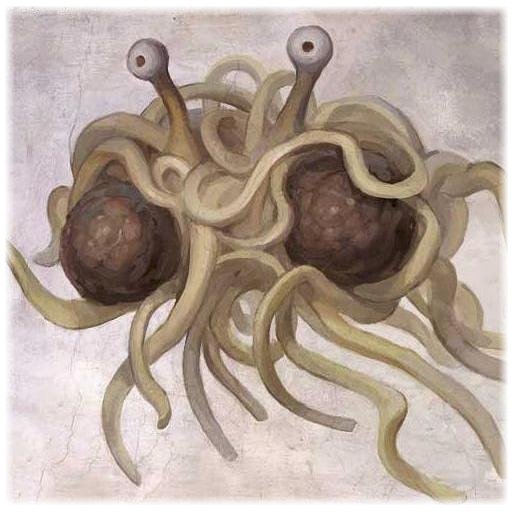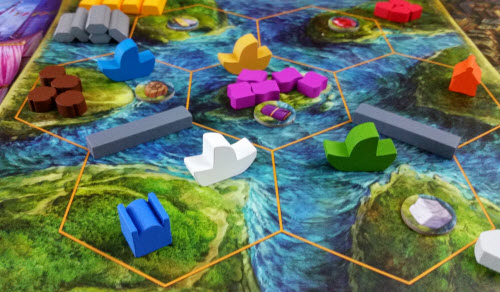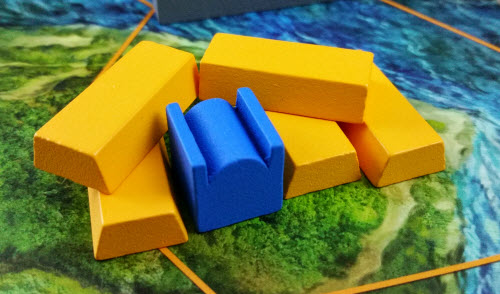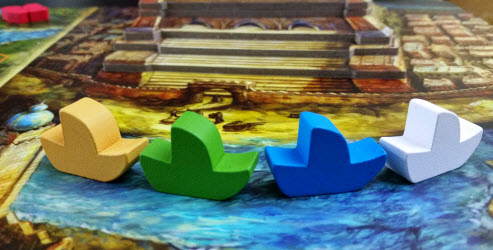Jotting down the last tallies of the latest donation into his ledger, Dhahabu finally had a moment’s respite to take in how overwhelming the last few months had been. The response to the elders’ announcement that the Great Temple would be constructed in the heart of Ophir was unbelievable. Dhahabu was certain there was to be resistance to such an undertaking, given the Temple’s purpose. Yet within days, the first boats full of supplies began to arrive – and hadn’t stopped since. Heading off to find a hot meal, he praised the people’s generosity, their wealth being shown not only in what they had but also in what they were willing to part with. By his calculations, if shipments continued at this rate, they could have the Temple built inside of two years.
Well, the portions of it the public would know about anyway…
The Premise
The land of Ophir is known to be a rich and prosperous place, and as a hub of economic and cultural wealth, it seems quite fitting that it be the place for construction of a glorious new temple. Accomplishing such a monumental feat requires a lot of assistance, however. Luckily, there is no shortage of those looking to prove their philanthropy here. As various rich and influential people within the Ophir region, players set sail for nearby shores as they compete over who can collect and donate the most precious metals to the temple’s cause.
The Rules
Ophir is a concise pick-up-and-deliver game with an equally light setup. The game mainly consists of a central board, numerous resource piles, and a Market deck comprised of market orders.
The board is created by randomly and secretly placing a location marker on each of the game’s seven hex spaces. Then, everyone rolls to determine first player. That person places two barriers down between hexes, eliminating movement between those spaces. Once done, the markers are revealed, denoting each of the game’s seven locations.
Next, the Market deck is used to fill the three current and one future market booth spaces before randomly placing the market and temple merchant modifiers.
Finally, each player in reverse turn order selects one of Ophir’s specialist cards, providing them with a special ability and a number of Favor Points. With that, each player also receives a ship board with two cargo hold spaces and matching die, set to ‘1’. Everyone’s ship begins at the Temple hex.
Turns in Ophir are short and simple. First, the player must move either one or two spaces. Otherwise, they must spend a Favor Point to stay anchored in place. When moving, if a player attempts to move into a space occupied by other ships, the moving player rolls their Influence die. If they roll equal to or higher than the other ship(s), they may enter that space. If not, they don’t, and that movement point is lost. Alternatively, players can spend a Favor Point to ignore rolling and move unrestricted.
After movement, the player takes the action of the space they are on. For basic good locations, they may claim one resource and place in their cargo hold. Basic goods are used at the marketplace to fill a market order once they have all the needed items. Fulfilled orders provide the coin amount listed on the card, adjusted for the market modifiers. After an order is fulfilled, market cards shift to the right, keeping orders in constant flow.
Players mostly use money to purchase metals at the metals hex. The cost of metals is determined by the current Temple level. However, players can also spend Favor to claim metals.
Metals are taken to the Temple, where they are donated towards Temple construction in exchange for VP. Once all three metal slots of the current Temple level are full, the next level is stacked atop the first. Players at the Temple are also able to upgrade their hold twice during the game and / or fulfill the order at the temple merchant booth to collect VP and Favor instead of coin.
After a player takes their action, the next player takes their turn. Turns continue until either the Temple is complete or the market deck runs out.
At that point, the player with the most VP is victorious, having been deemed the most influential (and “pious”) citizen of Ophir.
Everyone else should at least see if the priests will allow them to carve the initials on a column somewhere…
Inspiring Awe
From The Statue of Liberty, to the Great Pyramids, to Athena’s Parthenon, humans have built massive and iconic inspirational structures for artistic, religious, or mere functional purposes. Ophir does the same through its own grandiose Temple, offering a rather impressive presentation.
It’s also given a lot of space: the rightmost section is devoted almost entirely to the Temple, save a tiny spot housing the player hold markers. Once complete, Ophir’s Temple not only feels like an accomplishment, but it also fittingly – and literally – looms over the surrounding board.
This effect is achieved two-fold. First, its remarkable visage is created due its pieces graphically overlapping one another. All of Ophir’s Temple levels are designed to sit atop the next, with each slab visually depicting the next layer of construction. At the same time, the artwork of the Temple is slightly angled, creating an optical effect to make it seem even taller. With a careful blend of both vibrant and milder color tones, all of Ophir’s artwork is resplendent, from the player boards to the character cards. Yet the Temple rises above the rest.
Second, the Temple tiles are incredibly thick, reinforcing the game’s thematically massive undertaking. By having a visual cue to focus on, these big Temple pieces help convey a sense of purpose to an otherwise straightforward Resource Management game.
What’s more, these pieces wonderfully reflect the level of Ophir’s physical quality. With durable tiles, sturdy boards, and solid resource tokens, the majority of Ophir’s contents elevate the game’s overall worth. For instance, the entire mechanic of the Temple’s levels controlling the metals costs could have been represented on the board with a simple chart or grid with far greater ease. Instead, the designers decided on a three-dimensional alternative to convey that information in a thematic way that is as original as it is memorable.
Plus, stacking the Temple pieces is fun. Architects will especially enjoy the visceral experience of collecting and leveraging resources towards actually building the Temple, even if Ophir itself is on the lighter end of what they typically like in a game.
As superb as all of these factors are, however, Immersionists will still be markedly on the fence about Ophir. They will want to like this game more than they do, and while they’ll undoubtedly appreciate the Temple-building premise, many will get hung up on the game’s thematic vagaries.
That is, no where is it stated what the point of this massive Temple at Ophir even is, nor why are the rich and influential people of the region are wanting to contribute to said it. Since the game itself doesn’t offer these answers, we suggest inventing your own purpose, whether it’s to honor Zeus, Cthulhu, or the Flying Spaghetti Monster. In any case, though, these holes in the game’s already light theme will be difficult for many Immersionists to reconcile.
Chance Versus Fate
For a light pick-up-and-deliver game, Ophir surprisingly has a low degree of luck. Take the marketplace for example. While marketplace orders are luck of the draw, the game not only has a future market space to use for planning future actions, but only the rightmost order is ever cleared during a market cycle. Thus, the marketplace is more reliable than it first appears.
Similarly, although Ophir’s initial setup is largely randomized, this too is offset by its small map. With a mere seven hexes comprising the board, space is pretty confined, and yet every location is technically reachable in a single turn.
More importantly, these restricted waters help drive player interaction and showcase Ophir’s subtle-but-innate game tension. This is especially true with four players all trying to accomplish their goals and / or hamper one another, but Ophir proficiently maintains this competitive feeling regardless of player size.
The fact that turns are quick and player engagement is a key component to the game will drive Socializers on a pilgrimage to Ophir. Between a low learning curve and seeing how your decisions are informed by what others do, Ophir is precisely the type of game they like to show their devotion to.
Indeed, Ophir’s only major element of luck is that of movement itself. Because you are routinely jockeying with other players as everyone sails about, a lot of Influence checks happen. Admittedly, the idea of a Pass / Fail roll is both simple and mechanically sound, but it can also be contentious to some, as failing costs you a precious movement point and the ability to execute the actions you wanted. Although failing against an opponent will reduce their Influence number and make it easier for a subsequent attempt, this may be small comfort in the moment.
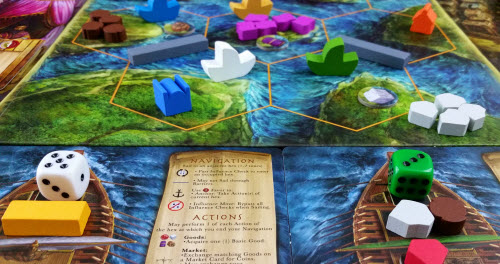
Green just failed a second Influence roll failed against White to get into the Temple space and does nothing on their turn. Wasn’t that fun?
However, even this can be mitigated by spending Favor points – though Favor is often scarce and not a guaranteed resource. Therefore, knowing when to roll and when to use Favor is key.
In either case, unless you skip roll entirely, how much you’ll be able to accomplish on your turn will decidedly be a mix of player location and how well you can roll against your opponent’s Influence. Many players (especially Strikers) will find it particularly frustrating that your Temple-forging plans can be completely disrupted by repeatedly rolling poorly for movement. Strikers will be doubly flummoxed since they not only have to contend with the idea of rolling to move, but they won’t like that attempts to block, stymie, and otherwise impede other players can easily be circumvented by spending said Favor.
The Trouble With Annual Pledge Drives
As concise and cohesive as Ophir and its Temple is, however, this light strategy game has one small but notable blemish in the form of long-term replayability. For a game otherwise so well put together, Ophir’s gameplay is unfortunately a bit too linear for its style. It has a respectable amount of variation with different map configurations, available roles, and a changing marketplace, but at its stone foundations, Ophir’s singular strategy is converting Resource A into Resource B into Resource C into VP. There are no alternative paths to victory here, and aside from your role card, the tactics used to achieve this are rather limited.
For some, this will be problematic. To Tacticians, these limitations are manageable to a point, as the game has enough freedom to think a couple turns ahead and plan for contingencies. At the same time, though, Ophir won’t have a great deal of long-term viability in holding their attention. To Daredevils, the game’s lack of diverse strategies and its emphasis on a singular purpose will be seen as pure blasphemy, and they should skip this port of call entirely.
The Takeaway
Ophir triumphs as a game with both a low degree of luck and an ease of accessibility – two traits that don’t often pair up well. With decent variability between playthroughs and gameplay decisions often contingent on the actions of others, Ophir is simple without being simplistic. Indeed, the game does a fitting job keeping players focused and interested while still being rules-light. Ophir is certainly not a complex game, but it also proves it doesn’t have to be to capture people’s attention.
Ophir’s gameplay merits are reinforced through incredibly well done artwork and equally impressive physical components – especially the game’s commanding Temple pieces. Although it only serves a minor part mechanically and the game in general is a bit sparse on flavor, Ophir would not be the same caliber game without its Temple. As such, when all of its pieces are stacked together, Ophir makes for a lightweight pick-up-and-deliver game that is easily one to make a temple donation for.
Ophir is a product of Terra Nova Games.
Cardboard Republic Snapshot Scoring (Based on scale of 5):
Artwork: 4.5
Rules Clarity: 4.5
Replay Value: 3.5
Physical Quality: 5
Overall Score: 4.5
Photo Credits: FSM by Wikimedia.

